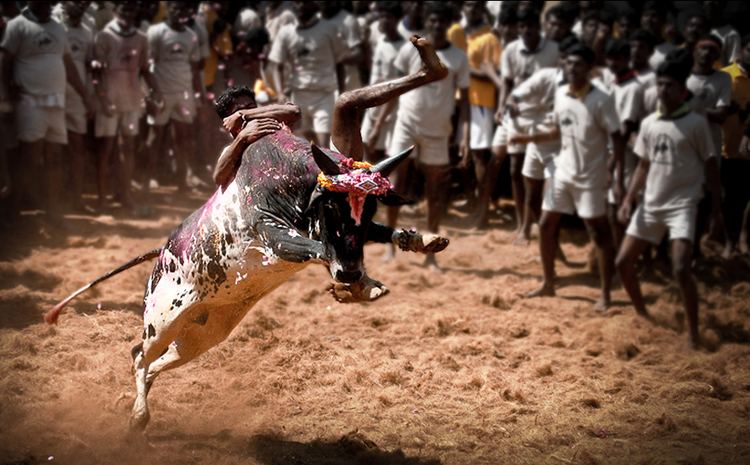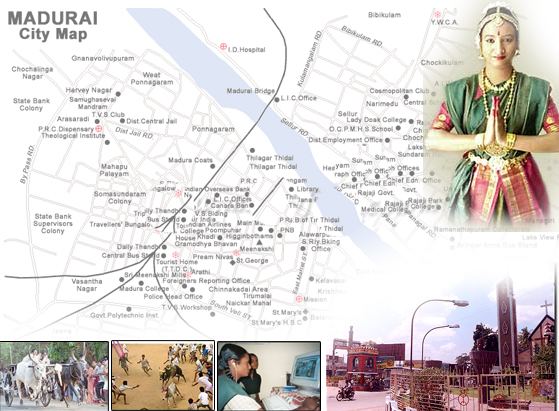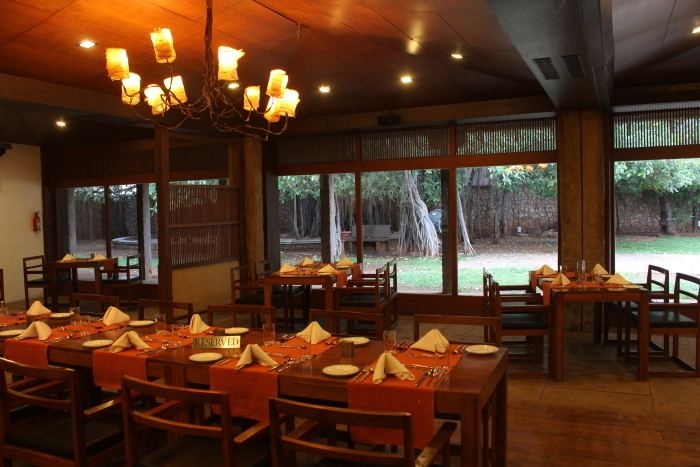Country India Language spoken Area 247.47 km2 | State District Madurai district Mayor V. V. Rajan Chellappa | |
Points of interest Meenakshi Amman Temple, Thirumalai Nayakkar Mahal, Koodal Azhagar Temple, Alagar Koyil, Vandiyur Mariamman Teppakulam Colleges and Universities Madurai Kamaraj University, Thiagarajar College of Engineering, K L N College of Engineering, American College - Madurai, Madura College | ||
Madurai is a major city in the state of Tamil Nadu in southern India. It is the administrative headquarters of Madurai District. Madurai is the third largest city in Tamil Nadu and the 31st largest urban agglomeration in India. Located on the banks of River Vaigai, Madurai has been a major settlement for two millennia and is one of the oldest continuously inhabited cities in the world.
Contents
- Map of Madurai
- Top ten places to visit in madurai
- Facts
- Tourist attractions at madurai
- History
- Geography and climate
- Economy
- Culture tourism and entertainment
- Madura cuisine
- References
Map of Madurai
Madurai is closely associated with the Tamil language, as all three primary congregations of Tamil scholars, the Third Tamil Sangams, were held in the city between 1780 BCE and the 3rd century CE. The recorded history of the city goes back to the 3rd century BCE, being mentioned by Megasthenes, the Greek ambassador to India, and Kautilya, a minister of the Mauryan emperor Chandragupta Maurya. The city is believed to be of significant antiquity and has been ruled, at different times, by the Early Pandyas, Medieval Cholas, Later Cholas, Later Pandyas, Madurai Sultanate, Vijayanagar Empire, Madurai Nayaks, Chanda Sahib, Carnatic kingdom, and the British.
Top ten places to visit in madurai
The city has a number of historical monuments, with the Meenakshi Amman Temple and Tirumalai Nayak Palace being the most prominent. Madurai is an important industrial and educational hub in South Tamil Nadu. The city is home to various automobile, rubber, chemical and granite manufacturing industries. It has developed as a second-tier city for information technology (IT), and some software companies have opened offices in Madurai.Tamil Nadu government planned satellite town for madurai near Thoppur.
Facts
Tourist attractions at madurai
Madurai has important government educational institutes like the Madurai Medical College, Homeopathic Medical College, Madurai Law College, Agricultural College and Research Institute. Madurai city is administered by a municipal corporation established in 1971 as per the Municipal Corporation Act. Madurai is the second corporation in Tamil Nadu next to Chennai corporation. The city covers an area of 147.99 km2 and had a population of 1,017,865 in 2011. The city is also the seat of a bench of the Madras High Court, one of only a few courts outside the state capitals of India.
History
Madurai has been inhabited since at least the 3rd century BCE. Megasthenes may have visited Madurai during the 3rd century BCE, with the city referred as "Methora" in his accounts. The view is contested by some scholars who believe "Methora" refers to the north Indian city of Mathura, as it was a large and established city in the Mauryan Empire. The city is also mentioned in Kautilyas (370–283 BCE) Arthashastra. Sangam literature like Maturaikkanci records the importance of Madurai as a capital city of the Pandyan dynasty. Madurai is mentioned in the works of Roman historians Pliny the Younger (61 – c. 112 CE), Ptolemy (c. 90 – c. CE 168), those of the Greek geographer Strabo(64/63 BCE – c. 24 CE), and also in Periplus of the Erythraean Sea.

After the Sangam age, most of present day Tamil Nadu, including Madurai, came under the rule of the Kalabhra dynasty, which was ousted by the Pandyas around 590 CE. The Pandyas were outsted from Madurai by the Chola dynasty during the early 9th century. The city remained under the control of the Cholas until the early 13th century, when the second Pandyan empire was established with Madurai as its capital. After the death of Kulasekara Pandian (1268–1308 CE), Madurai came under the rule of the Delhi Sultanate. The Madurai Sultanate then seceded from Delhi and functioned as an independent kingdom until its gradual annexation by the Vijayanagar Empire in 1378 CE. Madurai became independent from Vijayanagar in 1559 CE under the Nayaks. Nayak rule ended in 1736 CE and Madurai was repeatedly captured several times by Chanda Sahib (1740 – 1754 CE), Arcot Nawab and Muhammed Yusuf Khan (1725 – 1764 CE) in the middle of 18th century.
In 1801, Madurai came under the direct control of the British East India Company and was annexed to the Madras Presidency. The British government made donations to the Meenakshi temple and participated in the Hindu festivals during the early part of their rule. The city evolved as a political and industrial complex through the 19th and 20th centuries to become a district headquarters of a larger Madurai district. In 1837, the fortifications around the temple were demolished by the British. The moat was drained and the debris was used to construct new streets – Veli, Marat and Perumaal Mesthiri streets. The city was constituted as a municipality in 1866 CE. The British government faced initial hiccups during the earlier period of the establishment of municipality in land ceiling and tax collection in Madurai and Dindigul districts under the direct administration of the officers of the government. The city, along with the district, was resurveyed between 1880 and 1885 CE and subsequently, five municipalities were constituted in the two districts and six taluk boards were set up for local administration. Police stations were established in Madurai city, housing the headquarters of the District Superintendent.
It was in Madurai, in 1921, that Mahatma Gandhi, pre-eminent leader of Indian nationalism in British-ruled India, first adopted the loin cloth as his mode of dress after seeing agricultural labourers wearing it. Leaders of the independence movement in Madurai included N.M.R. Subbaraman and Mohammad Ismail Sahib. The Temple Entry Authorization and Indemnity Act passed by the government of Madras Presidency under C. Rajagopalachari in 1939 removed restrictions prohibiting Shanars and Dalits from entering Hindu temples. The temple entry movement was first led in Madurai Meenakshi temple by independence activist A. Vaidyanatha Iyer in 1939.
Geography and climate
Madurai is located at 9.93°N 78.12°E? / 9.93; 78.12. It has an average elevation of 101 metres. The city of Madurai lies on the flat and fertile plain of the river Vaigai, which runs in the northwest-southeast direction through the city, dividing it into two almost equal halves. The Sirumalai and Nagamalai hills lie to the north and west of Madurai. The land in and around Madurai is utilised largely for agricultural activity, which is fostered by the Periyar Dam. Madurai lies southeast of the western ghats, and the surrounding region occupies the plains of South India and contains several mountain spurs. The soil type in central Madurai is predominantly clay loam, while red loam and black cotton types are widely prevalent in the outer fringes of the city. Paddy is the major crop, followed by pulses, millet, oil seed, cotton and sugarcane.
The municipal corporation of Madurai has an area of 147.977 km2. Madurai is hot and dry for eight months of the year. Cold winds are experienced during February and March as in the neighbouring Dindigul. The hottest months are from March to July. The city experiences a moderate climate from August to October, tempered by heavy rain and thundershowers, and a slightly cooler climate from November to February. Fog and dew are rare, occurring only during the winter season. Being equidistant from mountains and the sea, it experiences similar monsoon pattern with Northeast monsoon and Southwest monsoon, with the former providing more rain during October to December. The average annual rainfall for the Madurai district is about 85.76 cm.
Temperatures during summer generally reach a maximum of 40 °C and a minimum of 26.3 °C, although temperatures up to 42 °C are not uncommon. Winter temperatures range between 29.6 °C and 18 °C. A study based on the data available with the Indian Meteorological Department on Madurai over a period of 62 years indicate rising trend in atmospheric temperature over Madurai city, attributed to urbanisation, growth of vehicles and industrial activity. The maximum temperature of 42 °C for the decade of 2001 – 2010 was recorded in 2004 and in 2010.
Economy
Madurai was traditionally an agrarian society, with rice paddies as the main crop. Cotton crop cultivation in the regions with black soil in Madurai district was introduced during the Nayaka rule during the 16th century to increase the revenue from agriculture. The paddy fields cultivated in the Vaigai delta across Madurai North, Melur, Nilakottai and Uthamapalayam are known as "double-crop paddy belts". Farmers in the district supplement their income with subsidiary occupations like dairy farming, poultry-farming, pottery, brick making, mat-weaving and carpentry. Madurai is famed for its jasmine plantations, called "Madurai Malli", primarily carried out at the foothills of Kodaikanal hills and traded at the Madurai morning flower market. An average of 2,000 farmers sell flowers daily at the flower market. With the advent of Small Scale Industries (SSI) after 1991, the industrialisation of Madurai increased employment in the sector across the district from 63,271 in 1992–93 to 166,121 persons in 2001–02.
Culture, tourism and entertainment

Madurai is popularly called Thoonga Nagaram meaning the city that never sleeps, on account of the active night life. The city attracts a large number of tourists from within the country and abroad. About 9,100,000 tourists visited Madurai in 2010, including 524,000 foreigners. Madurai is now attracting medical tourism also. The palace complex of Thirumalai Nayak Palace was constructed in the Indo-Saracenic style by Thirumalai Nayakar in 1636 CE. It is a national monument maintained by the Tamil Nadu Archaeological Department. The daily sound and light show organised by the department explains the virtues of King Thirumalai and the features of the palace. The palace of Rani Mangamma has been renovated to house one of the five Gandhi Sanghralayas (Gandhi Memorial Museum, Madurai) in the country. It includes apart of the blood-stained garment worn by Mahatma Gandhi when he was assassinated by Nathuram Godse. A visit by Dr.Martin Luther King Jr. to the museum inspired him to lead peaceful protests against discrimination. The Eco park, situated in Tallakulam, features fountains and lighting in trees using optical fibres. Rajaji childrens park, maintained by the Madurai Municipal Corporation, is situated between the Gandhi museum and the Tamukkam grounds. It has a visitor average of 5000 per day during holidays and 2000–3000 on working days. Madurai also has Theme Park, Athisayam which is situated in Paravai, Madurai – Dindugal main road. MGR Race Course Stadium is an athletic stadium which has a synthetic track and a swimming pool. Several national meets are held here. It also hosts several international and national level kabbadi championships.

The people of Madurai celebrate numerous festivals, including Meenakshi Tirukkalyanam, the Chittirai Festival and the Car Festival. The annual 10-day Meenakshi Tirukalyanam festival, also called Chittirai festival, is celebrated during April–May every year and attracts one million visitors. Legend has it that the Hindu god Vishnu, as Alagar, rode on a golden horse to Madurai to attend the celestial wedding of Meenakshi (Parvati) and Sundareswarar (Shiva). During the Cradle festival, the festive idols of Meenakshi and Sundareswarar are taken in procession to a mirror chamber and set on a rocking swing for nine days. Avanimoolam festival is celebrated during September when the 64 sacred games of Shiva, thiruvilayadal, are recited. The Thepporchavam festival, or float festival, is celebrated on the full moon day of the Tamil month Thai, which falls around January – February, to celebrate the birth anniversary of King Thirumalai Nayak. The decorated icons of Meenakshi and her consort are taken out in a procession from the Meenakshi Temple to the Mariamman Teppakulam. The icons are floated in the tank on a raft decked with flowers and flickering lamps. Jallikattu is one of the most popular historical sport in Tamil Nadu, and is a part of the Pongal festival (harvest festival) celebrated during January. The bull taming event is held in the villages surrounding Madurai, and people from the neighbouring villages throng to the open grounds to watch man and bull pitting their strength against each other. Santhanakoodu festivals in Madurai are celebrated on various days during the Islamic calendar year to commemorate Islamic saints.Madurai also consider as important hub for Indian film industry for film shootings.
Madura cuisine

Madura is an island on the northeastern coast of Java and is administered as part of the East Java province. Like the East Java foods which use petis udang, Madura foods add petis ikan which is made from fish instead of shrimp. The Madura style satay is probably the most popular satay variants in Indonesia. Some of its popular dishes are Sate Ayam Madura (Chicken Satay with Peanut Sauce), Soto Madura (Beef Soup). Madura dishes are often saltier than other East Java foods.
